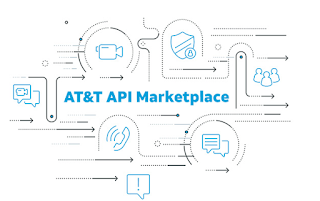The U.S. Department of Energy (DOE) announced plans to build Aurora - the first supercomputer with a performance of one exaFLOP in the United States - at Argonne National Laboratory in Chicago by 2021.
The contract, which is valued at more than $500 million, was awarded to Intel and Cray Inc. as a sub-contractor.
One exaFLOP of performance is equal to a “quintillion” floating point computations per second.
Intel said the foundation of the Aurora supercomputer will be new technologies designed specifically for the convergence of artificial intelligence and high-performance computing at extreme computing scale. These include a future generation of the Intel Xeon Scalable processor, Intel’s Xe compute architecture, a future generation of Intel Optane DC Persistent Memory, and Intel’s One API software. Aurora will use Cray’s next-generation supercomputer system, code-named “Shasta,” which will comprise more than 200 cabinets and include Cray's SlingshotTM high-performance scalable interconnect and the Shasta software stack optimized for Intel architecture.
“Achieving exascale is imperative, not only to better the scientific community but also to better the lives of everyday Americans,” said U.S. Secretary of Energy Rick Perry. “Aurora and the next generation of exascale supercomputers will apply HPC and AI technologies to areas such as cancer research, climate modeling and veterans’ health treatments. The innovative advancements that will be made with exascale will have an incredibly significant impact on our society.”
“There is tremendous scientific benefit to our nation that comes from collaborations like this one with the Department of Energy, Argonne National Laboratory, and industry partners Intel and Cray,” said Argonne National Laboratory Director Paul Kearns. “Argonne’s Aurora system is built for next-generation artificial intelligence and will accelerate scientific discovery by combining high-performance computing and artificial intelligence to address real world problems, such as improving extreme weather forecasting, accelerating medical treatments, mapping the human brain, developing new materials and further understanding the universe – and that is just the beginning.”
The contract, which is valued at more than $500 million, was awarded to Intel and Cray Inc. as a sub-contractor.
One exaFLOP of performance is equal to a “quintillion” floating point computations per second.
Intel said the foundation of the Aurora supercomputer will be new technologies designed specifically for the convergence of artificial intelligence and high-performance computing at extreme computing scale. These include a future generation of the Intel Xeon Scalable processor, Intel’s Xe compute architecture, a future generation of Intel Optane DC Persistent Memory, and Intel’s One API software. Aurora will use Cray’s next-generation supercomputer system, code-named “Shasta,” which will comprise more than 200 cabinets and include Cray's SlingshotTM high-performance scalable interconnect and the Shasta software stack optimized for Intel architecture.
“Achieving exascale is imperative, not only to better the scientific community but also to better the lives of everyday Americans,” said U.S. Secretary of Energy Rick Perry. “Aurora and the next generation of exascale supercomputers will apply HPC and AI technologies to areas such as cancer research, climate modeling and veterans’ health treatments. The innovative advancements that will be made with exascale will have an incredibly significant impact on our society.”
“There is tremendous scientific benefit to our nation that comes from collaborations like this one with the Department of Energy, Argonne National Laboratory, and industry partners Intel and Cray,” said Argonne National Laboratory Director Paul Kearns. “Argonne’s Aurora system is built for next-generation artificial intelligence and will accelerate scientific discovery by combining high-performance computing and artificial intelligence to address real world problems, such as improving extreme weather forecasting, accelerating medical treatments, mapping the human brain, developing new materials and further understanding the universe – and that is just the beginning.”





















